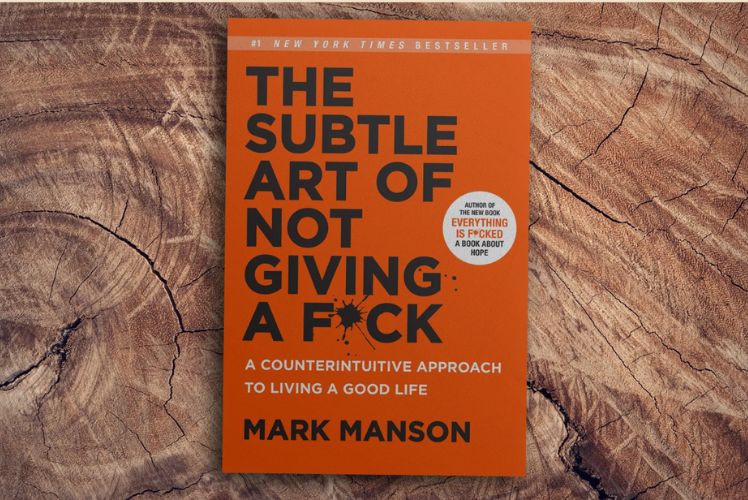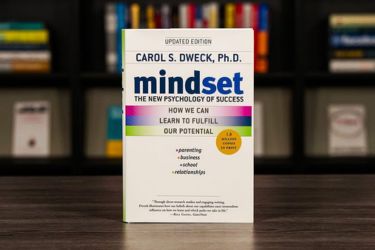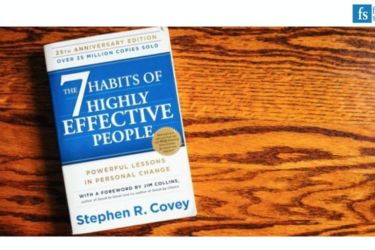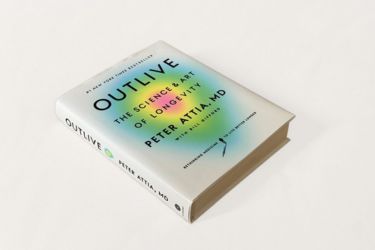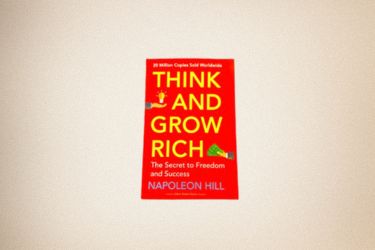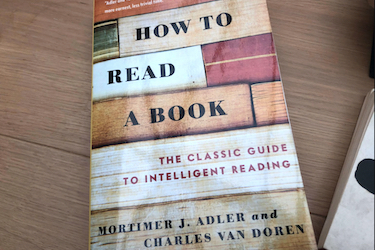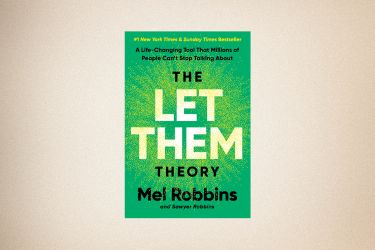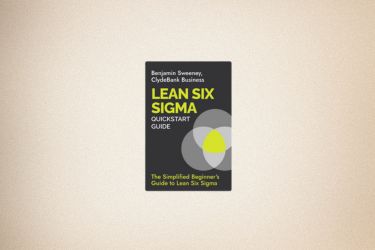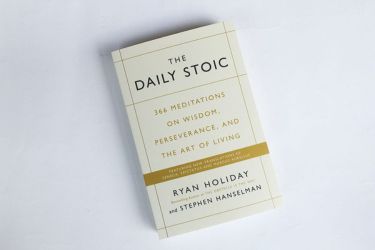Most self-help books promise easy answers and endless positivity, but Mark Manson's "The Subtle Art of Not Giving a F*ck" takes a completely different approach. This New York Times bestseller challenges readers to stop caring about everything and instead focus only on what truly matters.
Manson argues that we have limited energy to spend on caring, so we must choose wisely what deserves our attention and what doesn't. His blunt writing style and unconventional wisdom have made this book stand out in the crowded self-help market. Rather than offering feel-good platitudes, he presents uncomfortable truths about personal growth and success.
We've all felt overwhelmed by trying to care about too many things at once. This book review explores how Manson's counterintuitive approach might help us live more fulfilling lives by being more selective about our priorities and values.
Key Takeaways
- The book teaches readers to prioritise what truly matters rather than trying to care about everything equally
- Manson challenges traditional self-help advice by embracing failure and discomfort as necessary parts of growth
- The author's blunt writing style delivers practical wisdom about choosing better values and measuring success differently
Overview of The Subtle Art of Not Giving a F*ck
Mark Manson's 2016 bestseller challenges traditional self-help approaches through raw honesty and unconventional wisdom. The book combines personal development insights with a blunt writing style that rejects toxic positivity in favour of meaningful struggle.
Background and Author
Mark Manson is an American blogger and author who gained prominence through his irreverent approach to personal development. Before writing this book, he built a following through his blog where he shared counterintuitive life advice.
The book emerged from Manson's frustration with the self-help industry's emphasis on constant positivity. He noticed that traditional personal development books often created unrealistic expectations.
Manson draws from philosophy, particularly Stoicism, to create his framework. His background in internet marketing and blogging shaped his direct communication style.
The book became a New York Times bestseller, resonating with readers tired of sugar-coated advice. Manson's approach appealed to people seeking honest guidance rather than feel-good platitudes.
Book Structure and Style
The book presents its ideas through nine chapters, each building on core principles of selective caring. Manson uses personal anecdotes, historical examples, and philosophical concepts to illustrate his points.
His writing style is deliberately provocative and profanity-laden. This isn't mere shock value—it serves to cut through conventional wisdom and grab readers' attention.
Key structural elements include:
- Personal stories from Manson's life
- Historical examples and case studies
- Philosophical references, particularly Stoic principles
- Practical exercises and thought experiments
The tone remains conversational throughout, as if we're having an honest discussion with a blunt friend. Manson avoids academic jargon in favour of accessible language.
Each chapter ends with practical takeaways rather than abstract concepts. This structure makes the philosophical ideas actionable for everyday life.
Key Themes and Messages
The central message revolves around being selective about what deserves our attention and energy. Manson argues that we have limited capacity to care, so we must choose wisely.
Core themes include:
- Embracing struggle: Life's difficulties give it meaning rather than detract from it
- Rejecting victim mentality: Taking responsibility for our responses to circumstances
- Accepting uncertainty: Comfort with not having all the answers
- Choosing better problems: Focus on problems worth solving rather than avoiding all problems
The book challenges the personal development industry's obsession with happiness and success. Instead, it advocates for finding meaning through worthwhile struggles.
Manson emphasises that not caring about everything doesn't mean caring about nothing. We must identify what truly matters and invest our emotional energy there.
The philosophy draws heavily from Stoic principles, particularly the idea that we control our responses but not external events. This creates a framework for mental resilience without toxic positivity.
Core Concepts Explored in the Book
Manson presents three fundamental ideas that challenge conventional wisdom about personal development. These concepts focus on choosing what deserves our attention, questioning traditional definitions of achievement, and using personal principles to guide our decisions.
The Value of Prioritisation
The book's central message revolves around selective attention—we have limited energy and must choose where to direct it. Manson argues that caring about everything leads to caring about nothing meaningful.
The author suggests we naturally give attention to various things throughout our day. The key is becoming intentional about these choices rather than letting them happen automatically.
Three levels of prioritisation emerge:
- Immediate concerns (daily tasks and responsibilities)
- Personal goals (career, relationships, health)
- Core values (what fundamentally matters to us)
This approach differs from typical self-help advice that encourages us to pursue everything we want. Instead, it asks us to make difficult choices about what truly deserves our mental and emotional investment.
The book emphasises that saying no to certain things allows us to say yes more fully to others. This selective approach creates space for deeper engagement with what we consider most important.
Redefining Success and Happiness
Manson challenges the common belief that success means avoiding problems or achieving constant happiness. He argues that meaningful success comes through engaging with worthwhile struggles.
Traditional definitions often measure success through external markers: wealth, status, or recognition. The book suggests these metrics frequently leave people feeling empty despite apparent achievement.
Alternative success indicators include:
- Personal growth through challenges
- Alignment between actions and values
- Resilience during difficult periods
- Authentic relationships and connections
The author proposes that happiness isn't a destination but emerges from solving problems that matter to us. This perspective shifts focus from avoiding difficulties to choosing which difficulties are worth experiencing.
Living a good life, according to this framework, means accepting that struggle is inevitable and selecting struggles that align with our deeper purposes.
The Role of Values in Living a Good Life
Values serve as the foundation for decision-making and determine what we consider worth our attention. Manson distinguishes between healthy values (internal, controllable) and unhealthy values (external, dependent on others).
Healthy values include honesty, vulnerability, and personal responsibility. These values remain within our control regardless of external circumstances.
Unhealthy values often centre on others' opinions, material possessions, or circumstances beyond our influence. Pursuing these creates ongoing frustration and disappointment.
Key value characteristics:
- Evidence-based: We can measure progress objectively
- Constructive: They build rather than destroy
- Controllable: Success depends on our actions, not others'
The book suggests that examining our current values honestly reveals why certain areas of life feel unfulfilling. When our actions align with healthy values, we experience greater satisfaction even during challenging periods.
Personal development becomes more effective when guided by clear values rather than vague aspirations for improvement.
Dealing with Failure and Rejection
Manson challenges us to stop viewing failure and rejection as negative experiences. Instead, he shows us how these uncomfortable moments become essential tools for personal growth and help us establish healthy boundaries in our relationships.
Embracing Failure as Growth
Manson argues that our relationship with failure determines our success in life. He points out that we've been taught to avoid failure at all costs. This mindset keeps us stuck and prevents real progress.
The book presents failure as feedback, not defeat. Each mistake teaches us something valuable about ourselves and our goals. Manson explains that successful people fail more often than others because they take more risks and learn faster.
He offers practical ways to reframe failure:
- View setbacks as data collection
- Ask what the failure teaches us
- Focus on the process rather than outcomes
- Accept that growth requires discomfort
The author emphasises that failure only becomes truly harmful when we refuse to learn from it. We must stop protecting ourselves from failure and start using it as a compass for improvement.
Handling Rejection and Setting Boundaries
Rejection serves as a natural filtering system in our lives. Manson shows us that rejection helps identify who and what truly matters to us. When we fear rejection too much, we compromise our values and authentic selves.
The book teaches us that healthy relationships require rejection. We cannot please everyone, and attempting to do so leads to shallow connections. Manson explains that saying no to some things allows us to say yes to what matters most.
Key strategies for handling rejection include:
- Accepting that not everyone will like us
- Using rejection to clarify our priorities
- Setting firm boundaries without guilt
- Recognising that rejection often protects us
Manson emphasises that people who never experience rejection aren't taking enough risks. They're playing it too safe and missing opportunities for meaningful connections and experiences.
Counterintuitive Lessons for Personal Development
Mark Manson challenges traditional personal development wisdom by arguing that happiness comes through responsibility, embracing uncertainty, and confronting mortality rather than avoiding discomfort.
Taking Responsibility
Manson argues that we must take complete responsibility for our lives, even when events aren't our fault. This means owning our responses to situations rather than blaming external circumstances.
Taking responsibility doesn't mean accepting blame for everything that happens to us. Instead, it means recognising that we always have a choice in how we respond. We can choose our reactions, attitudes, and next steps.
This approach differs from typical self-help advice that focuses on positive thinking. Manson suggests that accepting responsibility for our problems empowers us to solve them. When we stop looking for someone else to blame, we start looking for solutions.
The book emphasises that responsibility is freedom. Once we accept that our problems are ours to solve, we gain the power to change our circumstances. This shift in thinking transforms us from victims into active participants in our own lives.
Accepting Uncertainty
Traditional personal development often promises certainty and control. Manson takes the opposite approach, arguing that accepting uncertainty is essential for growth and happiness.
We cannot predict or control most aspects of life. Trying to do so creates anxiety and disappointment. Instead, we should focus on what we can control: our values, actions, and responses.
Embracing uncertainty means being comfortable with not knowing outcomes. This mindset allows us to take risks, try new things, and grow as people. When we stop demanding certainty, we become more adaptable.
Manson suggests that our need for certainty often holds us back. We avoid opportunities because we cannot guarantee success. By accepting uncertainty as natural, we become more willing to pursue meaningful goals despite potential failure.
The Importance of Mortality Awareness
Manson believes that acknowledging our mortality gives life meaning and urgency. Most people avoid thinking about death, but this avoidance prevents them from living fully.
Death awareness helps us prioritise what truly matters. When we remember that our time is limited, we become more selective about where we invest our energy and attention.
This concept challenges the common advice to think positively about the future. Instead, Manson suggests that confronting death helps us make better decisions in the present. We stop wasting time on trivial matters.
Understanding that we will die eventually also reduces the importance of many daily worries. Minor setbacks and embarrassments matter less when viewed against the backdrop of mortality. This perspective brings clarity to our choices and actions.
Critical Analysis and Reader Reception
The book has received mixed reactions from critics and readers, with praise for its honest approach but criticism for its crude delivery. Public response has been polarised, with some viewing it as refreshing whilst others find it offensive.
Strengths and Weaknesses
Key Strengths:
- Honest messaging: The book challenges traditional self-help approaches by rejecting toxic positivity
- Practical advice: Manson provides actionable strategies rather than empty platitudes
- Accessible writing: Despite profanity, the core concepts are explained clearly
Notable Weaknesses:
- Excessive vulgarity: The crude language can overshadow valuable insights
- Limited depth: Some philosophical concepts receive superficial treatment
- Repetitive content: Key points are often restated without adding new value
Many book review sources highlight that whilst Manson's direct approach resonates with readers tired of conventional self-help, the execution sometimes undermines the message's credibility.
Public Response and Controversies
The book sparked significant debate within self-help communities. Supporters praise its "no-nonsense tone" and refreshing honesty about life's struggles.
Critics argue the provocative title and language are primarily marketing tactics rather than meaningful content. Some readers found the approach genuinely helpful for reframing their priorities.
Controversial aspects include:
- Use of profanity in professional development contexts
- Dismissal of positive thinking approaches
- Blunt treatment of sensitive mental health topics
The polarised reception reflects broader cultural divides about communication styles and self-improvement philosophies.
Final Thoughts and Takeaways
The Subtle Art of Not Giving a F*ck stands out from typical self-help books. Mark Manson rejects forced positivity and offers honest advice instead.
The book teaches us that living a good life doesn't mean being extraordinary. We simply need to care about the right things.
Key lessons include:
- We have limited energy to spend on concerns
- Focus only on what truly matters
- Embrace discomfort rather than avoid it
- Problems are inevitable parts of life
Mark Manson's writing style mixes humour with practical wisdom. His approach feels refreshing compared to other self-help authors.
The book works well for people who feel overwhelmed or anxious. It helps readers stop trying to do everything at once.
Who should read this:
- People struggling with anxiety
- Those feeling stuck in life
- Anyone tired of toxic positivity
- Readers wanting honest life advice
The main message is simple but powerful. We don't need perfect lives to be content.
Mark Manson shows us how to pick our battles wisely. This skill helps reduce stress and increases satisfaction.
The book challenges common beliefs about happiness and success. It offers a more realistic view of what living a good life actually means.
We recommend this book for its practical approach to modern life problems. It provides tools that actually work in real situations.
Frequently Asked Questions
Mark Manson's book raises common questions about its unconventional approach to self-help and personal development. Readers often want to understand the book's structure, themes, and how it differs from traditional positive thinking guides.
What are the main themes discussed in 'The Subtle Art of Not Giving a F*ck'?
The book focuses on choosing what truly matters in life rather than caring about everything. Manson argues that we should direct our energy towards things that genuinely fulfil us.
The author challenges the pursuit of constant happiness and positivity. He suggests that embracing life's struggles leads to greater satisfaction than avoiding them.
Personal responsibility forms another key theme. Manson emphasises taking ownership of our reactions and choices, even when we cannot control external circumstances.
The book also explores the importance of accepting our limitations. Rather than believing we can be anything we want, Manson encourages realistic self-assessment and growth within our actual capabilities.
How many chapters are included in 'The Subtle Art of Not Giving a F*ck', and what are they about?
The book contains nine chapters that build upon each other systematically. Each chapter explores different aspects of Manson's philosophy about focusing on what matters.
The opening chapters establish the foundation by explaining why caring about fewer things leads to better outcomes. Middle chapters examine how our values shape our experiences and why traditional self-help advice often fails.
Later chapters address taking responsibility for our lives and accepting that pain is inevitable. The final chapters focus on commitment, rejection of entitlement, and acknowledging our mortality to gain perspective.
Each chapter includes personal anecdotes, research, and practical examples. Manson uses blunt language throughout to challenge readers' assumptions about success and happiness.
Can 'The Subtle Art of Not Giving a F*ck' be summarised effectively, and what are its key takeaways?
The book's central message is that we should be selective about what we care about. Rather than trying to avoid all problems, we should choose problems worth solving.
One key takeaway is that happiness comes from solving meaningful problems, not avoiding them. Manson argues that struggle gives life purpose and direction.
Another important lesson involves questioning our values regularly. The author suggests that many people adopt values that don't actually serve their wellbeing or goals.
The book emphasises that we cannot control what happens to us, but we can control our responses. This shift in focus from external to internal control improves mental health and satisfaction.
What has been the critical reception to 'The Subtle Art of Not Giving a F*ck' amongst readers and reviewers?
The book became a New York Times bestseller, indicating strong commercial success. Many readers appreciate Manson's direct, no-nonsense approach to self-improvement.
Critics praise the book for challenging typical self-help conventions. Reviewers often mention that Manson's blunt style feels refreshing compared to overly positive alternatives.
Some readers find the frequent profanity off-putting or unnecessary. However, supporters argue that the crude language serves to grab attention and emphasise important points.
The book receives praise for being practical rather than theoretical. Many reviewers note that Manson provides actionable advice instead of vague inspiration.
Is there an adaptation of the book 'The Subtle Art of Not Giving a F*ck', such as a film or series?
Currently, there is no major film or television adaptation of Manson's book. The book remains primarily available in written and audiobook formats.
Manson has created supplementary content through his blog and podcast appearances. He frequently discusses the book's concepts in interviews and speaking engagements.
Some online platforms feature video summaries and discussions of the book's key points. However, these are unofficial adaptations created by content creators rather than authorised productions.
The book's popularity suggests potential for future adaptations. Given current trends in self-help content, visual adaptations could emerge in coming years.
How does 'The Subtle Art of Not Giving a F*ck' compare to other books in the self-help genre?
Unlike many self-help books, Manson rejects the idea that positive thinking solves all problems. He directly criticises the "everything will be fine" mentality common in the genre.
Traditional self-help books often promise quick fixes and easy solutions. Manson instead argues that meaningful change requires accepting difficulty and discomfort.
The book's language sets it apart from more formal self-help titles. Manson uses profanity and casual speech to connect with readers who find typical self-help writing pretentious.
Many self-help authors encourage readers to believe they can achieve anything. Manson takes the opposite approach, suggesting we should accept our limitations and work within them realistically.

